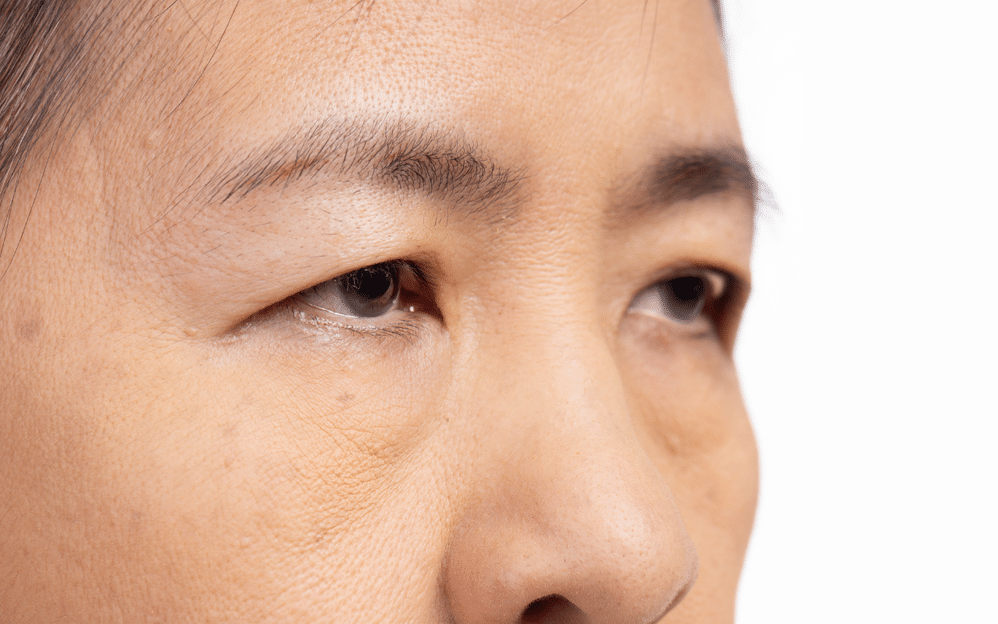Ptosis, or drooping eyelids, occurs when the muscles controlling the eyelids weaken. It can result from genetic factors, accidents, or serious health issues, affecting both men and women, especially as they age.
Treatment options vary and include both surgical and non-surgical methods. The right choice depends on the individual's specific situation and should be determined by a qualified physician for effective and personalized care.
Let’s look at what ptosis is, the risks of leaving it untreated, and the best treatment methods available.
What is Ptosis?

Ptosis, or drooping eyelids, occurs when the upper eyelid sagging, giving the appearance of aging and fatigue. This condition can affect one or both eyes and may lead to vision impairment. There are two primary types of ptosis:
Dermatochalasis: Characterized by sagging skin around the eyelids, causing asymmetry and obstructing vision.
Muscle Ptosis: Results from weakened eyelid muscles, which may be congenital or acquired, leading to a constant tired appearance and potential vision obstruction.
Causes of Ptosis
Ptosis can arise from various factors, including:
Weakened Eyelid Muscles: Often due to aging or neurological issues.
Genetics: Family history can influence the likelihood of developing ptosis.
Injury: Trauma to the eye area can affect eyelid function.
Aging: Natural skin laxity and fat accumulation contribute to drooping eyelids.
A thorough evaluation by an eye specialist is essential to identify the underlying causes and determine appropriate treatment.
Impact of Ptosis
On Appearance:
Asymmetry: Uneven eyelids can lead to an unbalanced facial appearance, affecting self-esteem.
Reduced Vitality: Droopy eyelids can make the eyes appear smaller and convey fatigue.
On Health:
Vision Impairment: Severe cases can obstruct the upper field of vision, leading to awkward head positions to see clearly, which may cause additional facial wrinkles.
Eye Strain: Constantly straining to see can result in discomfort and muscle fatigue.
Amblyopia (Lazy Eye): In children, untreated ptosis can hinder visual development.
Can Ptosis Resolve on Its Own?
Ptosis typically does not improve without intervention. The primary causes include:
Skin Laxity: Age-related deterioration of skin structure.
Fat Accumulation: Excess fat in the eyelid leading to heaviness.
Weak Eyelid Muscles: Conditions such as Myasthenia Gravis can impair eyelid function.
Treatment Options
Surgery: The most effective solution is eyelid surgery, which lifts the eyelids by removing excess skin and fat and may involve muscle adjustment.
Medication: For cases related to Myasthenia Gravis, medications can alleviate symptoms.
Temporary Relief Options:
Eyelid Tape: A non-surgical method for mild cases.
Botox Injections: Can temporarily lift the eyelids, but effects last only 4-6 months, requiring repeat treatments.
When to Seek Medical Advice
Consult a doctor if you experience:
Inability to fully open your eyelids.
Double vision, increasing accident risk while driving.
Visual impairment that requires awkward head positioning.
Additional symptoms like eye pain, redness, blurriness, or swelling.
A specialist can assess the severity of ptosis and its effect on your quality of life, enabling a customized treatment plan.
Eyelid Surgery for Ptosis

Eyelid surgery is the preferred approach to correct ptosis, offering clear, long-lasting results that enhance quality of life. Common surgical methods include:
Eyelid Lift: Removal of excess skin and tightening of the muscles.
Fat Removal: Eliminating excess fat causing sagging.
Muscle Reinforcement: Strengthening the eyelid muscles for better control.
Results are typically visible within 1-2 weeks and can be permanent.
Benefits of Surgery:
Wider eyelid opening.
Improved vision.
Enhanced self-confidence.
A more youthful appearance.
Risks: While generally safe, potential risks include infection, scarring, or dry eyes. Selecting a reputable facility and experienced surgeon can minimize these risks.
If you're struggling with ptosis affecting your vision and confidence, don’t let it disrupt your life any longer. Kamal Hospital is here to help you with expert care and modern technology tailored to address your concerns effectively.
Kamol Surgery Hospital offers comprehensive beauty services and is committed to providing exceptional care for all.

